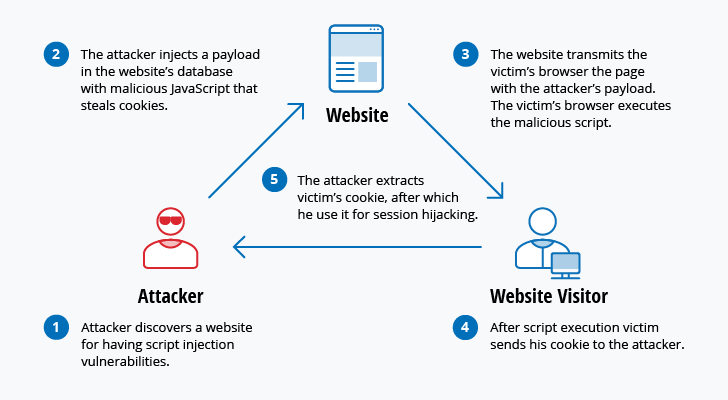- Home
- Blog
ASQ CQA – 5. Quality Tools and Techniques Part 14
5H Plan Risk Management and Identify Risks And these five steps are plan risk management, identify risk, analyze risks, plan risk response and monitor and control risks. In this particular video we will be talking about first two steps planning risk management and identifying risks. Let’s start with planning risk management. How do you plan risk management in the organization? When you want to set up risk management in the organization, you need to set up some rules and processes in place. You need to establish that who’s doing what…
ASQ CQA – 5. Quality Tools and Techniques Part 13
5F Configuration Management Application management. There is an ISO standard which is 10,007. And this is quality management system guidelines for configuration management. And what is the purpose of this standard? This standard assists organization in applying configuration management for technical and administrative direction over the life cycle of a product. So here what we are doing is we are considering the whole life cycle of the product product. And what confliction management does is the confliction management is used to meet the product identification and traceability requirements as identified…
ASQ CQA – 5. Quality Tools and Techniques Part 12
5E3 Sampling Terms There is a risk involved in sampling now with this understanding now let’s move on to the next topic here which is sampling terms. In sampling terms, let’s look at this table here we have the actual lot condition, how the lot was and we had that understanding that we have acceptable quality level of 1. 5% or whatever acceptable quality level you have. So the truck or the lot could be good or the lot could be bad the lot will be good. If the items…
ASQ CQA – 5. Quality Tools and Techniques Part 11
5D3 Outliers The next topic in process variation is outliers. So here as CQA, you are expected to understand the significance and impact of outliers. But before we do that, let’s understand what an outlier is. An outlier is an extreme value. So if we just take the same example of me traveling from my home to office, most of the time I was able to reach my office between 610 and 650 and one day if I reach 730, that was outlier. That was significantly different from other readings….
ASQ CQA – 5. Quality Tools and Techniques Part 10
5C3 Qualitative and Quantitative Analysis Here we need to understand the type of data, what type of data we are dealing with. Data could be broadly classified into two types, qualitative or quantitative. As the name suggests, quantitative is quantity and qualitative is related to the quality. Qualitative is the measure of type. Let’s say if we have number of cars and we note down the color of those cars, the blue, red, white, blue, white, red and so on, this will be a qualitative data. Here we are looking…
ASQ CQA – 5. Quality Tools and Techniques Part 9
5C Basic Statistics Let’s understand some basic concepts related to statistics. When we say statistics, statistics is related to numbers. But then this has two main branches. One is the descriptive statistics, and the second is the inferential statistics. When we we say descriptive statistics, descriptive is to describe, to tell. Inferential is to infer or guess about something. So what we do in descriptive statistics, we describe something. Let’s say you have a class in which you have 20 students. You take the measurement of each of these students,…
ASQ CQA – 5. Quality Tools and Techniques Part 8
5B2 Waste Elimination – Kanban Card And in that we mentioned about Canben card and we did not talk much about Kanban card there. Now, in this video, we will learn about Kanban card and Canben system. Canben is a Japanese word, and the meaning of that is the sign board or billboard in Japanese. And this is an inventory control system. This was developed by Tai Chi Ohono as a part of just in time for Toyota. So you need to make things when these are needed. Let’s take…
ASQ CQA – 5. Quality Tools and Techniques Part 7
5B2 Lean – Types of Wastes – Muda, Mura and Muri Topic of waste elimination. First, we will understand the types of wastes that will help us in identifying wastes. And then we will look at various techniques to eliminate waste. The techniques which will be covered in this course are the Pull system can ban five S standard work and poka UK. Even before we talk about types of wastes, let us understand and the philosophy behind waste. One thing which we need to understand is that waste exists…
ASQ CQA – 5. Quality Tools and Techniques Part 6
5B2 Lean – Introduction and Benefits So this is the key difference between six sigma and Lean. Before we talk about anything further, let’s talk about the benefits of Lean. As I earlier told, the focus of Lean is to reduce waste. And that is the first benefit of implementing Lean. That in lean you reduce waste. Waste is anything which is nonvalue added activity. Anything which doesn’t add value is a waste. And that’s what we focus here on Lean to reduce the waste. Another benefit of Lean is…
ASQ CQA – 5. Quality Tools and Techniques Part 5
5A9 Plan-Do-Check-Act (PDCA) Cycle Coming to this last tool in the list of basic quality and problem solving tools, which is PDCA or plan, do, check, act, p than a tool. I will consider this as a philosophy. A philosophy for doing anything. So whatever you are doing, doing, you do this, you plan, you do, you check and then you act on that. So when we talk of PDCA cycle, there are two names here. PDCA plan, do, check and act, and PDSA plan, do, study and act. Initially,…
Popular posts
Recent Posts
- Certified in Risk and Information Systems Control (CRISC): Exam and Salary Analysis
- Certified Kubernetes Administrator (CKA) vs. Certified Kubernetes Application Developer (CKAD): Which Path to Choose?
- Machine Learning and Big Data Analytics: New Content in the Microsoft Certified: Azure AI Engineer Associate Exam
- The New PMP Certification: What’s Changed in PMI’s Approach to Project Management in IT?
- The Impact of AI and Automation on IT Certifications: New Topics Emerging in 2024 Exams











